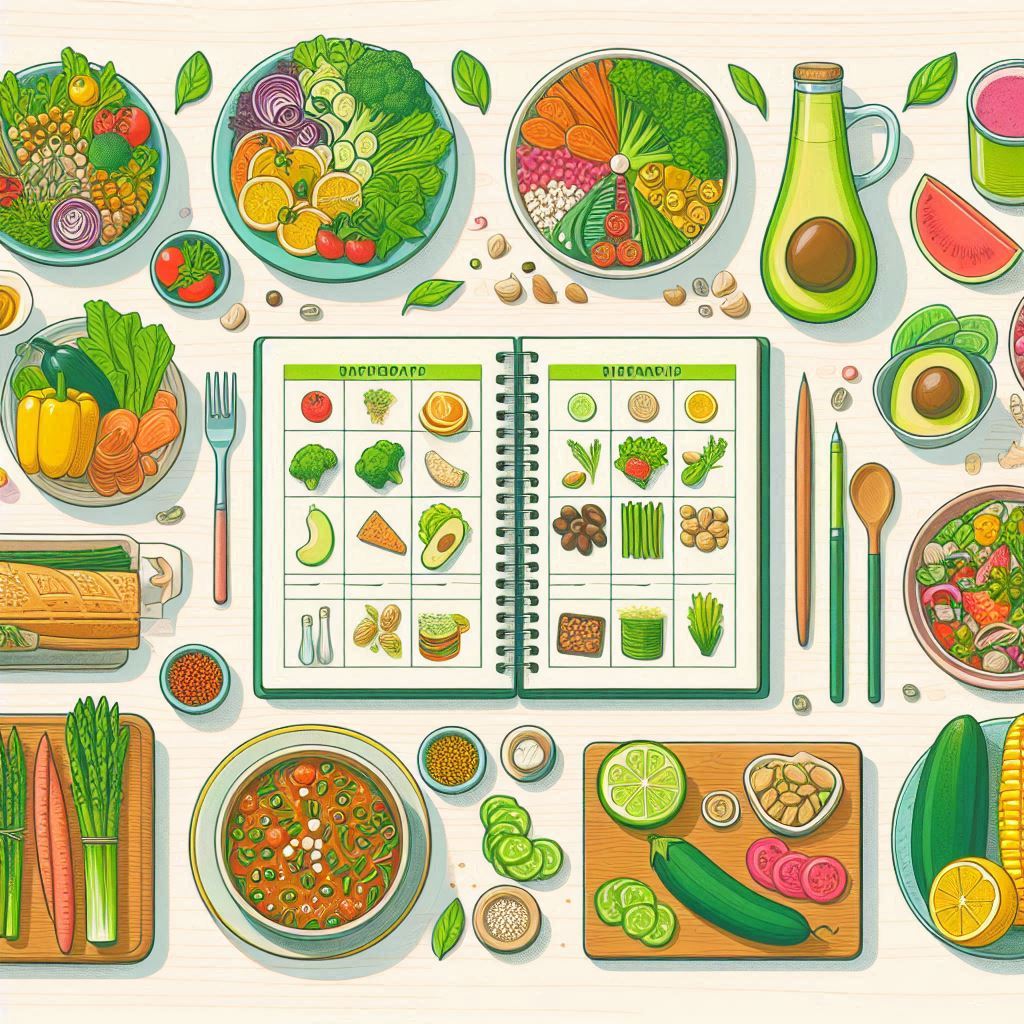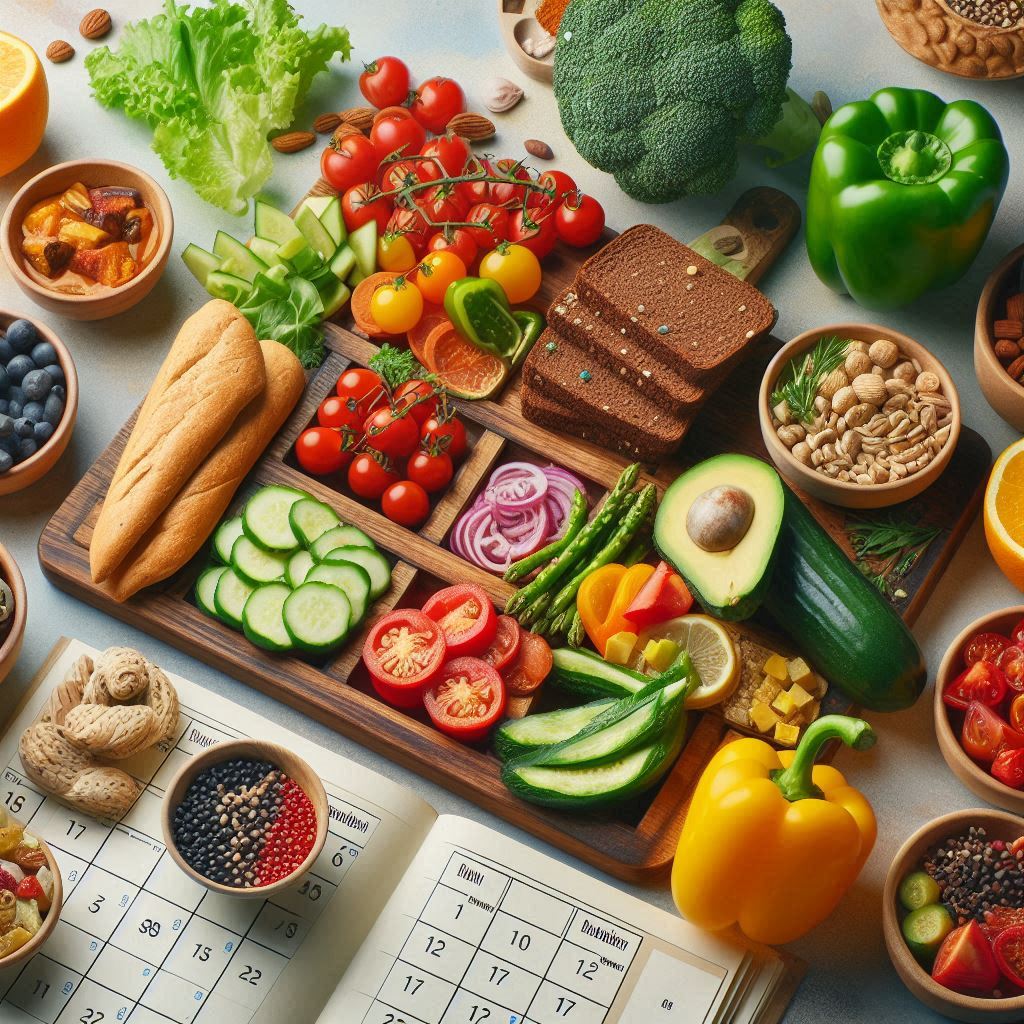Switching to a plant-based diet might seem daunting, especially if you’re used to eating meat and dairy regularly. However, with the right planning and preparation, creating delicious and nutritious plant-based meals can be simple and enjoyable. Whether you’re looking to adopt a fully plant-based lifestyle or just want to incorporate more plant-based meals into your week, this guide is here to help.
In this post, we’ll cover everything you need to know about planning a week of plant-based meals, from tips on building balanced meals to a full sample menu for beginners.
1. What is a Plant-Based Diet?
A plant-based diet primarily focuses on foods derived from plants. This includes fruits, vegetables, grains, nuts, seeds, and legumes. Unlike vegan diets, which eliminate animal products, a plant-based diet is more flexible. Some people may choose to include small amounts of animal products, but the majority of their diet is plant-centric.
Key Components of a Plant-Based Diet:
- Fruits and Vegetables: The foundation of any plant-based diet.
- Whole Grains: Quinoa, brown rice, oats, and whole wheat.
- Legumes: Beans, lentils, chickpeas, and peas.
- Nuts and Seeds: Almonds, chia seeds, flaxseeds, and walnuts.
- Healthy Fats: Avocados, olive oil, and nuts.
Pro Tip:
If you’re just starting, you don’t need to go 100% plant-based right away. Begin by incorporating more plant-based meals into your week and gradually reduce animal-based products.
2. Benefits of a Plant-Based Diet
Making the shift toward a plant-based diet comes with numerous health and environmental benefits. Here are just a few reasons to consider adding more plant-based meals to your routine.
Health Benefits:
- Improved Digestion: A plant-based diet is rich in fiber, which promotes a healthy digestive system.
- Lower Risk of Chronic Diseases: Studies show that plant-based diets can reduce the risk of heart disease, diabetes, and certain cancers.
- Better Weight Management: Whole, plant-based foods tend to be lower in calories and higher in nutrients, which may help with weight control.
Environmental Benefits:
- Reduced Carbon Footprint: Plant-based diets require fewer resources to produce, lowering greenhouse gas emissions.
- Sustainability: Reducing meat and dairy consumption helps conserve water and land.
3. Tips for Planning Your Plant-Based Meals
Meal planning is the key to success when adopting a new diet. It helps you stay organized, save time, and avoid falling back on unhealthy options. Here are a few tips to make plant-based meal planning simple and fun.

1. Focus on Balanced Meals:
When planning meals, aim for balance by including a mix of protein, healthy fats, fiber, and complex carbohydrates. For example, combine grains like quinoa with beans or tofu for a protein-packed, filling meal.
2. Use Meal Prep Techniques:
Prepare ingredients ahead of time to make cooking during the week easier. For example, cook a batch of grains, roast vegetables, or make sauces on Sunday to save time during busy weekdays.
3. Explore New Recipes:
Switching to a plant-based diet is a great opportunity to try new foods and recipes. Explore dishes from various cuisines, such as Indian, Mediterranean, or Mexican, which often have naturally plant-based options.
4. Keep Snacks on Hand:
Having plant-based snacks like hummus and veggies, nuts, or fruit readily available will help you stay on track and avoid reaching for less healthy options.
4. Sample Plant-Based Weekly Meal Plan
To help you get started, here’s a sample weekly plant-based meal plan. This plan is designed for beginners and focuses on simplicity, balance, and variety.
Day 1: Monday
- Breakfast: Oatmeal with almond butter, banana, and chia seeds.
- Lunch: Lentil salad with spinach, cherry tomatoes, cucumber, and lemon-tahini dressing.
- Dinner: Stir-fried tofu with broccoli, bell peppers, and brown rice.
Day 2: Tuesday
- Breakfast: Smoothie with spinach, banana, almond milk, and flaxseeds.
- Lunch: Chickpea and avocado wrap with whole wheat tortilla.
- Dinner: Black bean chili with quinoa and avocado.
Day 3: Wednesday
- Breakfast: Whole grain toast with mashed avocado, cherry tomatoes, and hemp seeds.
- Lunch: Quinoa salad with roasted sweet potatoes, black beans, and a lime vinaigrette.
- Dinner: Spaghetti with marinara sauce and sautéed mushrooms, spinach, and zucchini.
Day 4: Thursday
- Breakfast: Chia pudding with coconut milk, berries, and almonds.
- Lunch: Veggie burger made with black beans and oats, served with a side salad.
- Dinner: Thai-inspired peanut tofu stir-fry with jasmine rice.
Day 5: Friday
- Breakfast: Smoothie bowl topped with granola, coconut flakes, and fresh fruit.
- Lunch: Hummus and veggie sandwich on whole wheat bread.
- Dinner: Vegan lentil curry with brown rice and a side of steamed greens.
Day 6: Saturday
- Breakfast: Pancakes made with oat flour, served with berries and maple syrup.
- Lunch: Spinach and quinoa stuffed bell peppers.
- Dinner: Vegan burrito bowl with black beans, corn, salsa, and avocado.
Day 7: Sunday
- Breakfast: Scrambled tofu with spinach, mushrooms, and bell peppers.
- Lunch: Veggie sushi rolls with avocado, cucumber, and carrot.
- Dinner: Roasted vegetable and chickpea stew with whole grain bread.
5. Grocery Shopping for a Plant-Based Week

Planning a week of plant-based meals starts with a well-organized grocery list. By stocking your pantry with the right staples, you’ll always have ingredients on hand to create nutritious and delicious meals. Below is a sample grocery list based on the meal plan above.
Sample Plant-Based Grocery List:
| Category | Items to Buy |
|---|---|
| Fruits | Bananas, apples, berries, avocado |
| Vegetables | Spinach, kale, bell peppers, broccoli, zucchini |
| Grains | Quinoa, brown rice, whole wheat bread |
| Legumes | Lentils, black beans, chickpeas, tofu |
| Nuts & Seeds | Almonds, chia seeds, flaxseeds, hemp seeds |
| Dairy Alternatives | Almond milk, coconut yogurt |
| Healthy Fats | Olive oil, avocado, nut butters |
| Condiments | Soy sauce, tahini, peanut butter, sriracha |
| Herbs & Spices | Garlic, ginger, cumin, turmeric, basil |
Pro Tips for Grocery Shopping:
- Buy in bulk when possible. Grains, beans, and nuts can often be bought in bulk to save money and reduce packaging waste.
- Shop seasonal: Seasonal produce is often more affordable and fresher.
- Check labels for hidden animal products if you’re aiming to avoid all animal-based ingredients.
FAQs About Plant-Based Eating
Q1: Is a plant-based diet expensive?
Not necessarily! While specialty plant-based products can sometimes be pricey, focusing on whole foods like beans, grains, and vegetables is affordable. Buying in bulk and cooking at home also helps reduce costs.
Q2: How do I get enough protein on a plant-based diet?
Protein is abundant in plant-based foods such as beans, lentils, tofu, quinoa, nuts, seeds, and whole grains. By including a variety of these in your meals, you’ll easily meet your protein needs.
Q3: Can I eat processed plant-based foods like veggie burgers?
It’s best to focus on whole, minimally processed foods for optimal health, but occasionally enjoying plant-based processed foods like veggie burgers or dairy alternatives is fine. Just be mindful of the ingredients and choose options with fewer additives and preservatives.
Q4: Will I get enough vitamins and minerals on a plant-based diet?
Yes, as long as you eat a variety of plant foods. Ensure you get enough vitamin B12 by either consuming fortified foods or taking a supplement. You should also include calcium-rich plant foods like leafy greens, almonds, and fortified plant milks.
Q5: How can I stay full on a plant-based diet?
Incorporating healthy fats (like avocado, nuts, and seeds), fiber-rich foods (like whole grains and legumes), and protein will help you feel full and satisfied. Don’t be afraid to eat larger portions of plant-based meals since they are often lower in calories but rich in nutrients.
Conclusion
Planning a week of plant-based meals is simpler than you might think. By focusing on balance, variety, and preparation, you can create delicious, nourishing meals that support your health and reduce your environmental impact. Whether you’re committing to a fully plant-based diet or just trying to eat more plant-based meals throughout the week, this guide provides you with the tools and tips to get started.
Remember, progress is more important than perfection, so start with small changes and build your way to a sustainable, plant-powered lifestyle!



0 Comments